Results
-
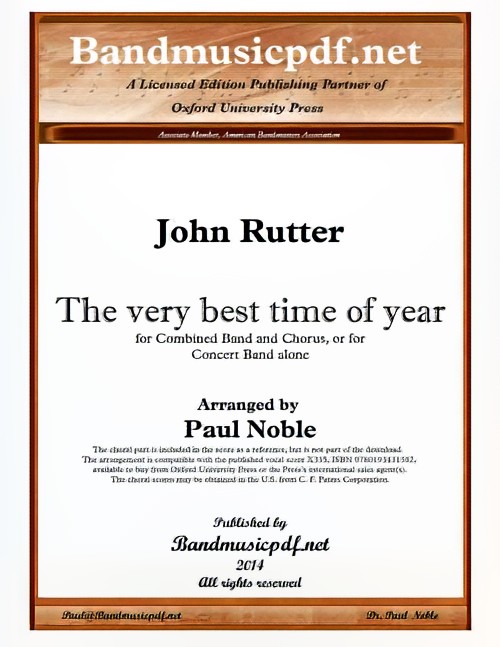 £75.00
£75.00The Very Best Time of Year (Concert Band with Optional Choir - Score and Parts) - Rutter, John - Noble, Paul
This is another beautiful and luscious carol from John Rutter, and the setting is easy to moderately easy. The arrangement is written and intended for combined Wind Band and Chorus. However, it is also arranged so that it is complete with Wind Band alone. The choral part is shown in the conductor's score, but is not included in the set. This arrangement is compatible with the published vocal score.
Estimated dispatch 7-14 working days
-
 £75.00
£75.00We Wish You a Merry Christmas (Concert Band with Optional Choir - Score and Parts) - Noble & Rutter
This piece was written as a final encore at Christmas concerts when the audience simply refused to go home! This arrangement is offered with the choral part shown in the score, but not as part of the set. The arrangement is compatible with the published vocal score.
Estimated dispatch 7-14 working days
-
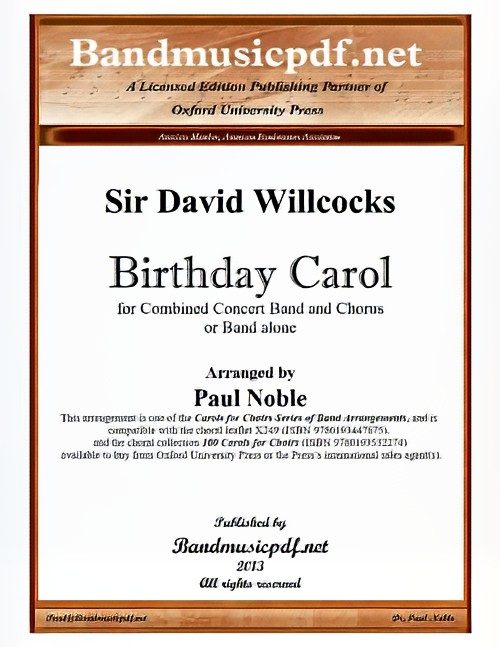 £75.00
£75.00Birthday Carol (Concert Band with Optional Choir - Score and Parts) - Willcocks, David - Noble, Paul
This arrangement is based on the original Orchestra/Choral arrangement by Sir David Willcocks. The vocal score is included in this score as a reference, but is not included as a part of the set.
Estimated dispatch 7-14 working days
-
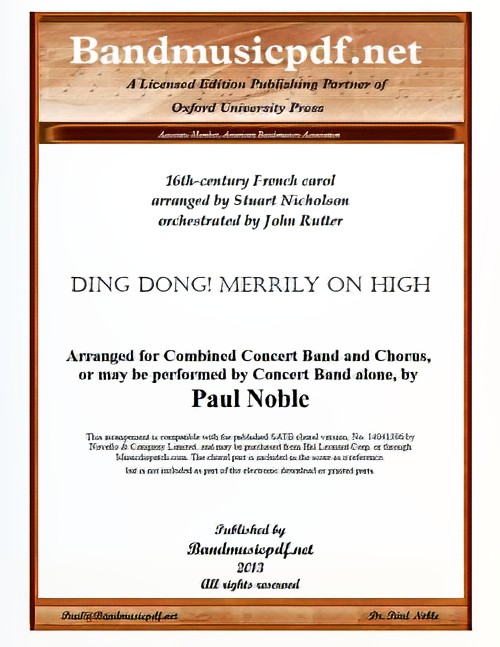 £75.00
£75.00Ding Dong! Merrily on High (Concert Band with Optional Choir - Score and Parts) - Noble & Rutter
Since first hearing John Rutter's orchestration of Stuart Nicholson's adaptation of this piece, I have wanted to bring it to the repertoire of the Concert/Wind Band. It is written for combined Concert Band and Chorus, but may be performed by Band alone. The choral part is shown in the conductor's score, but is not included in the set. This is the happiest and most joyful presentation of the 16th-century French carol that will delight your audience and band alike!
Estimated dispatch 7-14 working days
-
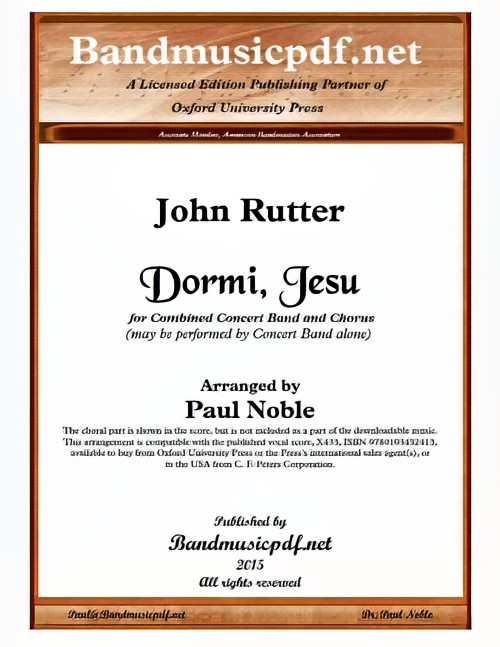 £75.00
£75.00Dormi, Jesu (Concert Band with Optional Choir - Score and Parts) - Rutter, John - Noble, Paul
The Latin text of this lullaby has been known and admired for centuries. It was translated into English by S. T. Coleridge (1772-1834). This arrangement is written for combined Concert Band and Chorus, but may be performed by Concert Band alone The choral part is shown in the score, but is not included as a part of the set. This arrangement is compatible with the published vocal score.
Estimated dispatch 7-14 working days
-
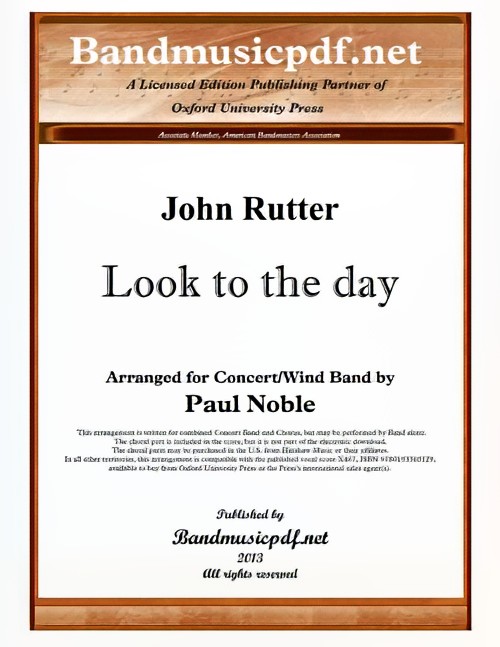 £75.00
£75.00Look to the Day (Concert Band with Optional Choir - Score and Parts) - Rutter, John - Noble, Paul
Written at the invitation of Cancer Research UK for their Service of Thanksgiving in Ely Cathedral, 23rd September 2007. This arrangement is written for combined Concert Band and Chorus, but may be performed by Concert Band alone. The choral part is included in the score, but it is not included in the set. This arrangement is compatible with the published vocal score available seperately. This is another of John Rutter's gorgeous melodies and a deeply moving piece. When performed with Chorus, the words will certainly make a profound statement.
Estimated dispatch 7-14 working days
-
 £75.00
£75.00Quelle est Cette Odeur Agreable (Whence is That Goodly Fragrance Flowing?) (Concert Band with Optional Choir - Score and Parts) - Noble & Willcocks
The original setting of this beautiful melody was for Strings and Chorus. This Concert/Wind Band version features the brass ensemble, the woodwind choir, as well as the full band. It is intended for combined Band and Chorus, but may be performed by Band alone. It is completely compatible with the published choral edition, except that it is written one-half step lower (E-flat instead of E major). There are no accidentals, and, apart from the instructions for andante and legato, the phrasing is left to the conductor. The simplicity and rich harmonic structure make this an important addition to the repertoire of young bands, and a perfect piece for any band to program for the Christmas season.
Estimated dispatch 7-14 working days
-
 £75.00
£75.00Wells Jubilate (Concert Band with Optional Choir - Score and Parts) - Rutter, John - Noble, Paul
This rousing Jubilate was written in 2009 for Matthew Owens and the choirs of Wells Cathedral as a companion piece to the composer's Winchester Te Deum. With its strong melody and rich textures and harmonies, this work will prove immensely popular with all lovers of Rutter's music. The arrangement is written for combined Concert Band and Chorus, but may be performed by Concert Band alone. The choral part is included in the score, but is not included in the set. The arrangement is compatible with the published vocal score available seperately. Bands may enjoy performing this antiphonally, placing the brass apart from the rest of the ensemble.
Estimated dispatch 7-14 working days
-
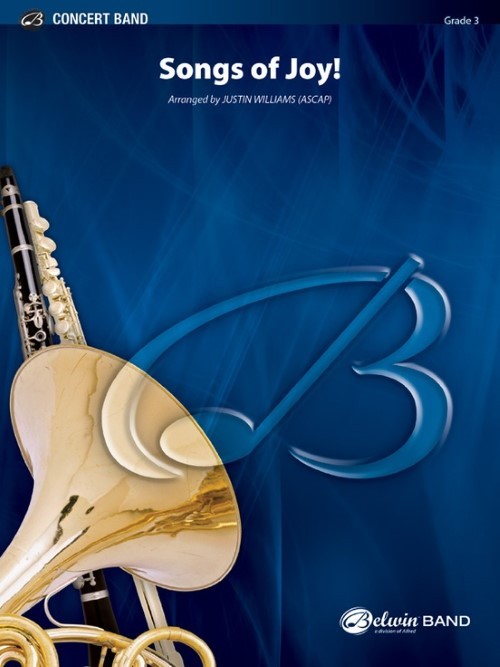 £66.95
£66.95Songs of Joy! (Concert Band - Score and Parts) - Williams, Justin
Timeless and beloved, "Jesu, Joy of Man's Desiring" and the "Choral Finale" from Beethoven's Ninth Symphony are brought to your concert ensemble like you've never heard before in a new and exciting arrangement. Suitable for any occasion, this work incorporates Celtic, pop, and rock styles interwoven with catchy riffs and contemporary harmonies for a refreshing and fun experience for your audience and ensemble!Duration: 3:30
Estimated dispatch 7-14 working days
-
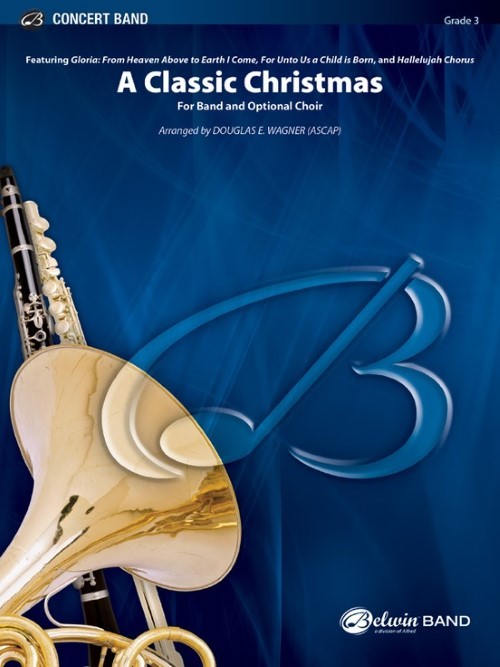 £70.50
£70.50A Classic Christmas (Concert Band with Optional Choir - Score and Parts) - Wagner, Douglas E.
A cherished holiday medley containing three Baroque holiday masterworks woven together in this festive musical celebration of the season. Building on the work of Vivaldi (Gloria), Bach (From Heaven Above to Earth I Come), and Handel (For Unto Us a Child is Born; Hallelujah Chorus), Douglas Wagner's arrangement has been scored to work alone as a concert band work, or to include a variety of choral voicings and/or the optional string orchestra set. A dramatic holiday program work to showcase your entire music department!Duration: 4:30
Estimated dispatch 7-14 working days
